Getting seedlings off to a good start begins with a good growing medium for transplants. Growing media for organic production must meet the guidelines set out by the National Organic Standards Board, including not containing any synthetic substances (unless they have been approved for that use) or any prohibited materials. A number of products meet those criteria, and many of them are listed by the Organic Materials Review Institute (OMRI) to document that they meet the criteria.
Last year, with funding from a USDA Specialty Crops Block Grant through the Indiana State Department of Agriculture, a group at Purdue began evaluating commercially-available, OMRI-listed growing media for vegetable transplant production (Table 1).
| Product | Abbreviation | Source |
|---|---|---|
| Johnny’s 512 | J512 | Johnny’s Selected Seeds |
| Morgan Composting 201 | M201 | Morgan Composting |
| Penn Valley Potting Soil | PENN | Penn Valley Farms |
| PromixMP Organik | PMPO | BFG Supply |
| Seed Catapult | SCOE | Ohio Earth Food |
| Sunshine #1 Natural & Organic | SUN1 | BFG Supply |
| Vermont Compost Fort Light | VCFL | Vermont Compost |
The goal is to identify which media produce transplants that establish well and identify media physical and chemical characteristics associated with good performance. In addition, we want to understand microbiological differences in the growing media and whether those differences might influence crop performance in the field. We compared media in trials at Pinney Purdue Ag Center near Wanatah, HLA Growth Facility in W. Lafayette, and Southwest Purdue Ag Center, Vincennes.
The preliminary analysis of results from 2018 suggest that when tomato seedlings are grown without any added fertilizer beyond what the media supplies, growing media made with compost (J512, M201, PENN, SCOE, and VCFL) performs better than media without compost (PMPO and SUN1). ‘Better growth’ means plants in compost-containing media were heavier (in terms of dry weight, Fig. 1), taller (Fig. 2), had thicker stems (Fig. 3), more leaves on the main stem (Fig. 4), and bloomed and set fruit earlier after being transplanted to the field (Fig. 5). Figure 6 shows plants from the first trial at Pinney Purdue Ag Center, which were seeded on March 13, 2018.
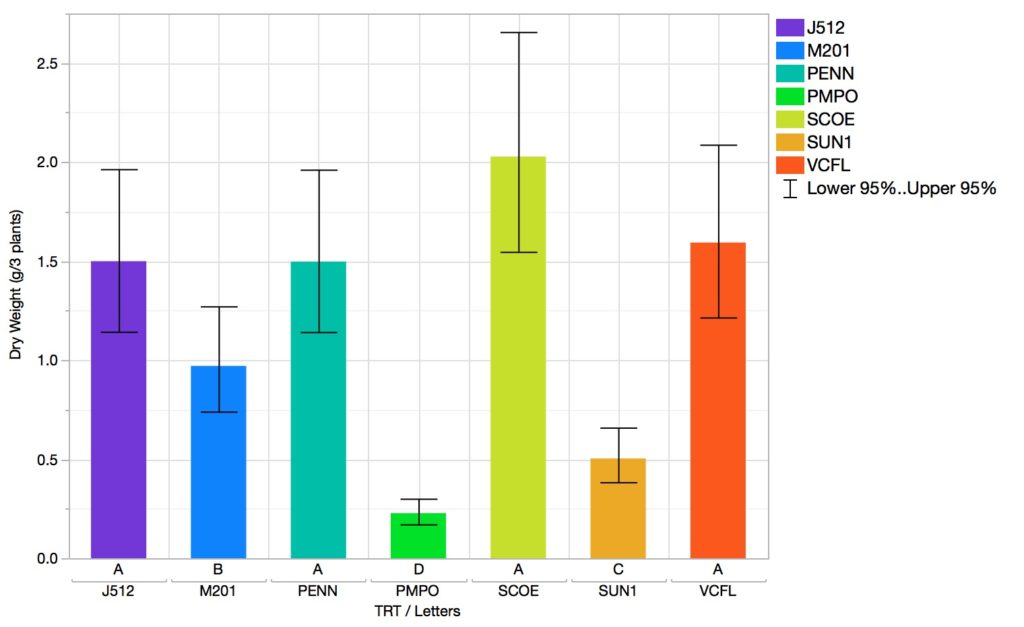
Fig. 1. Tomato seedling dry weight in seven transplant growing media, Indiana, 2018.
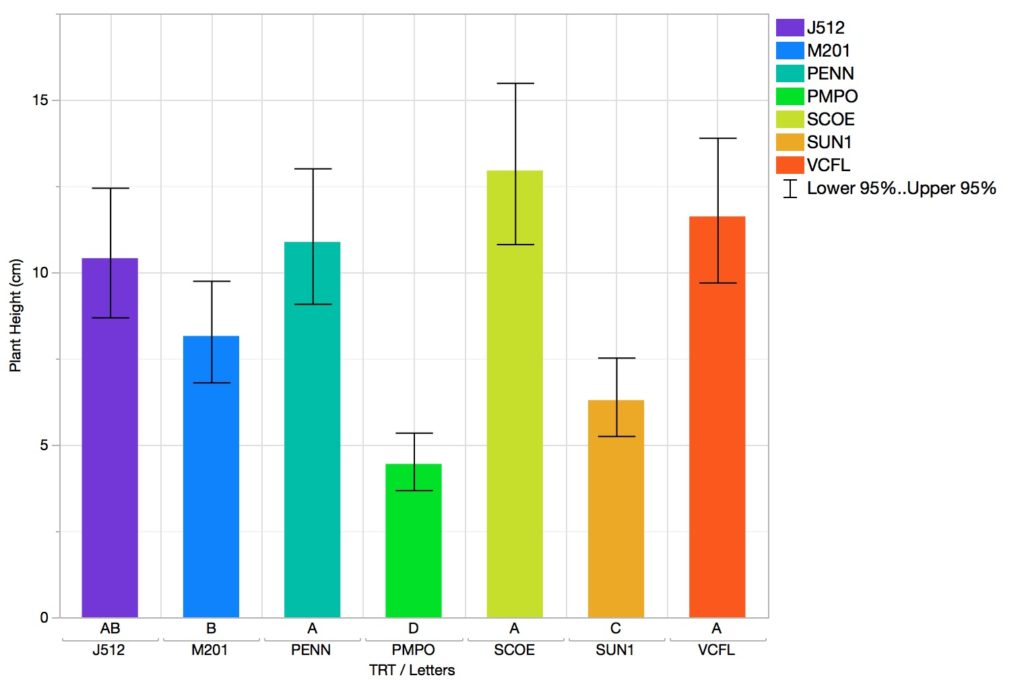
Fig. 2. Tomato seedling height in seven transplant growing media, Indiana, 2018.
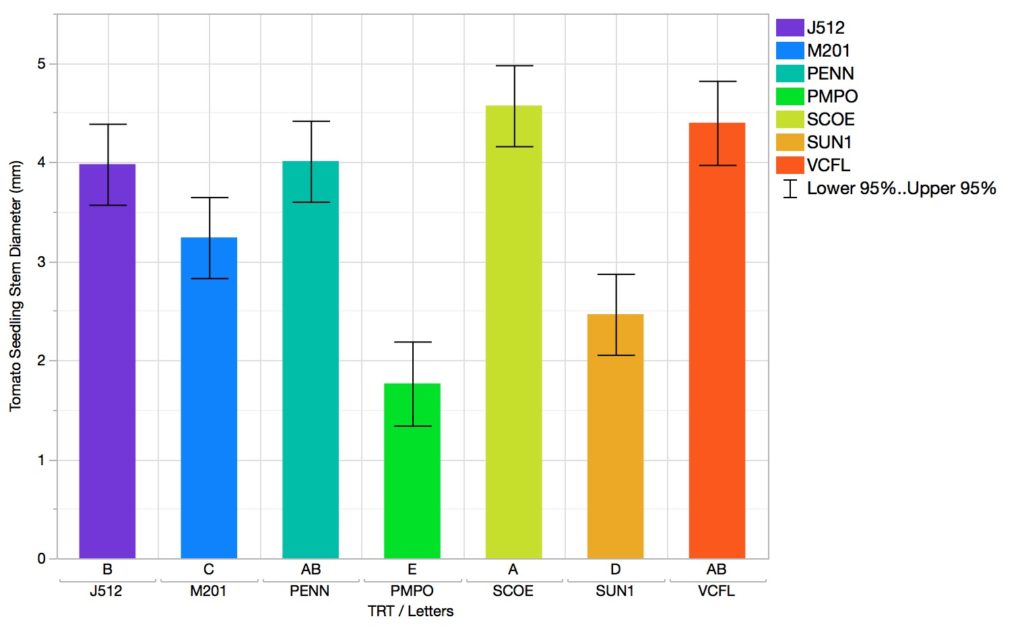
Fig. 3 Stem diameter of tomato seedlings grown in seven growing media, Indiana 2018.
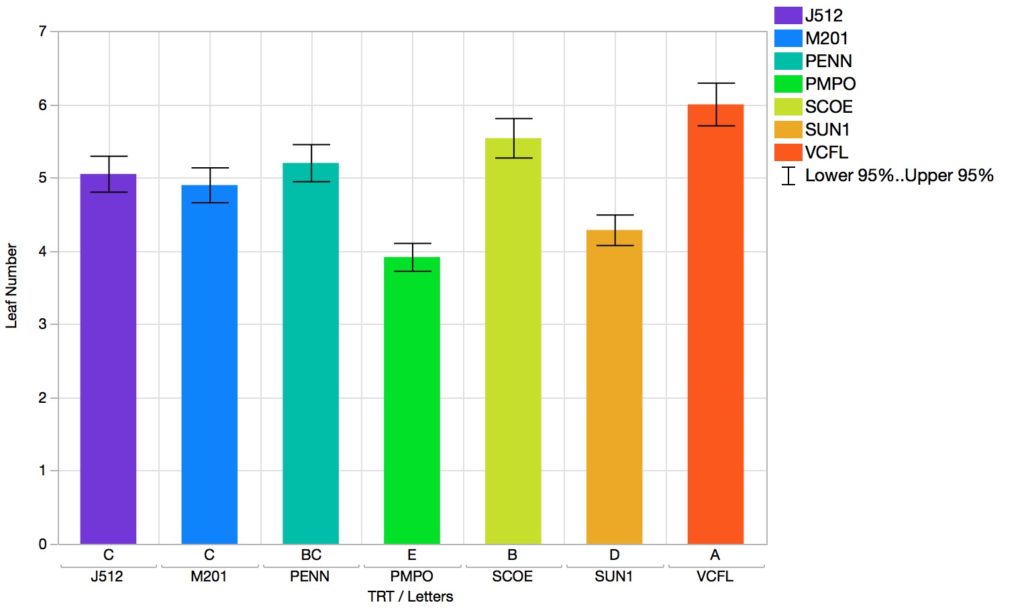
Fig. 4. Main stem leaf number 2 weeks after transplanting of tomato plants grown in seven transplant growing media, Indiana, 2018.
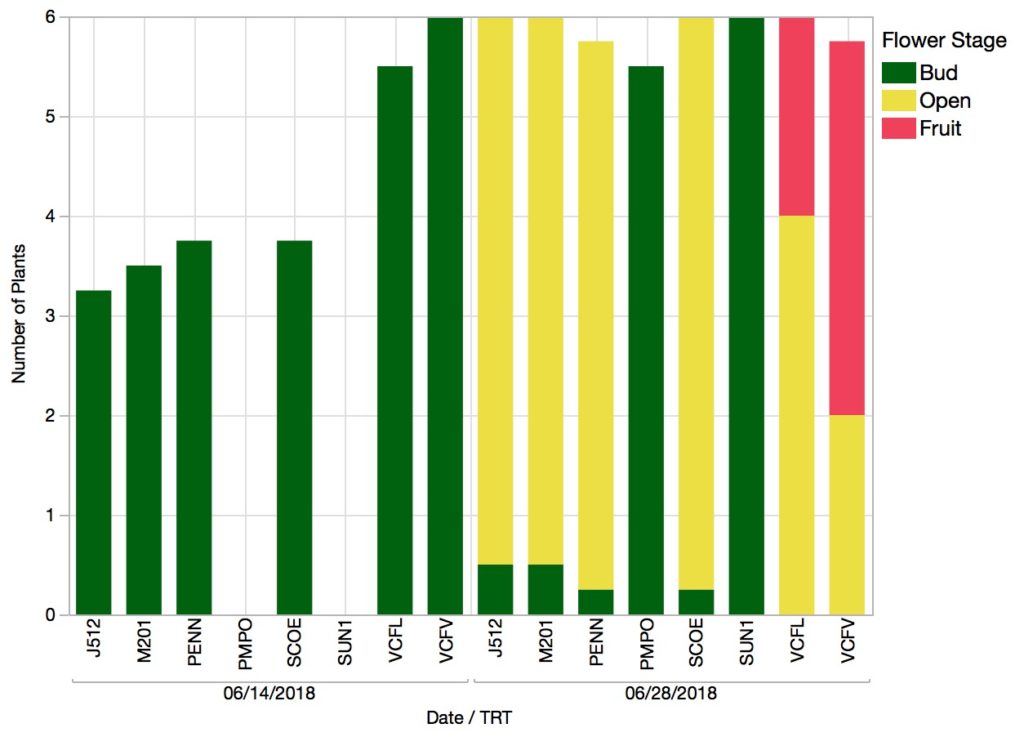
Fig. 5. Tomato plants with at least 1 bud, open flower, or fruit on first main stem truss, 2 and 4 weeks after transplanting, when grown in seven different media before transplanting. Pinney Purdue Ag Center, 2018.
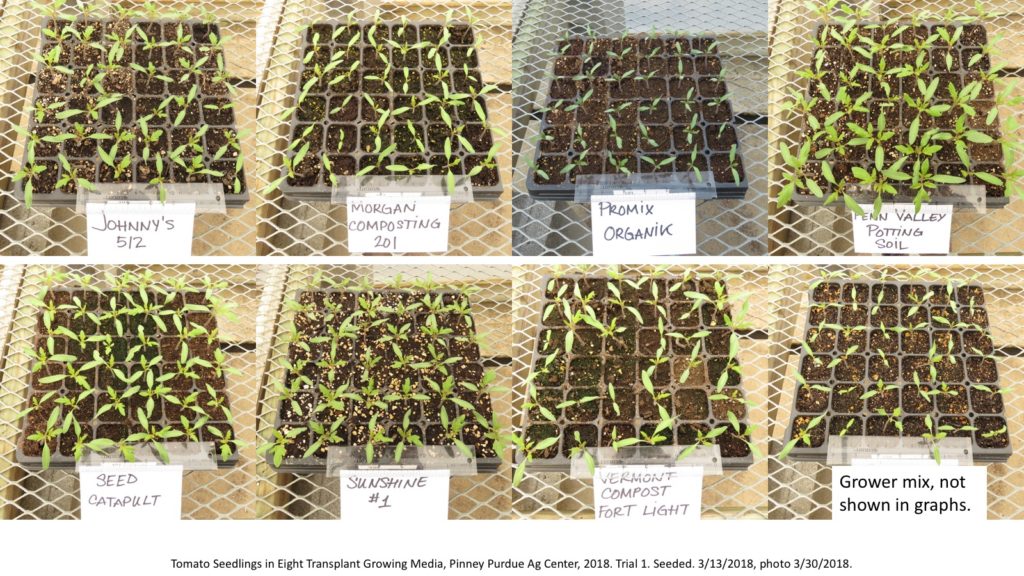
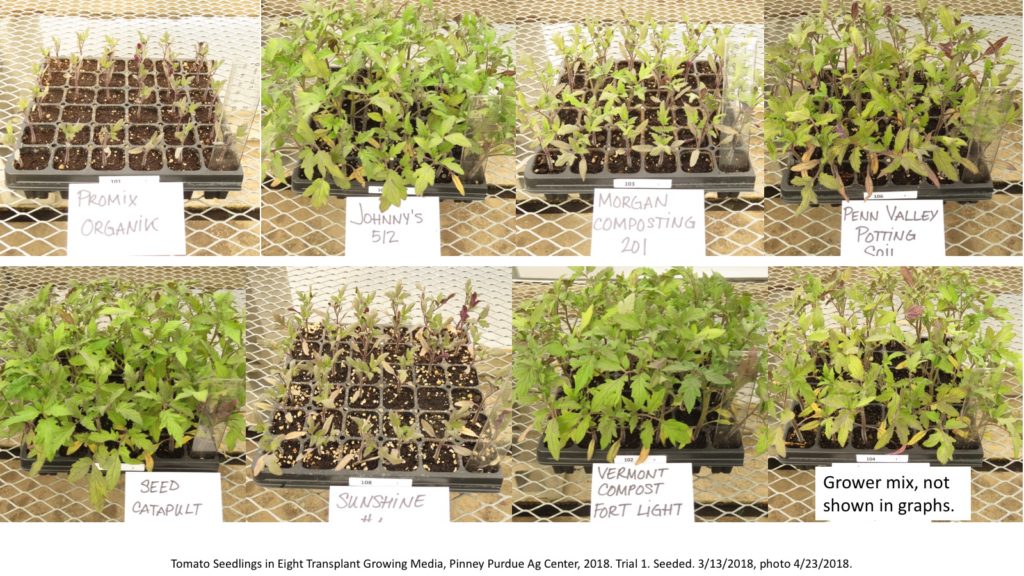
Fig. 6. Tomato seedlings in eight transplant growing media, Pinney Purdue Ag Center, 2018. Trial 1. Seeded 3/13/2018, photo 3/30/2018 (top) and 4/23/2018 (bottom).
As is clear from Figs. 1-6, all growing media containing compost were not equal: seedlings grew faster in some than in others.
Averaged across all sites and trials, tomatoes performed best in SCOE and VCFL, followed by PENN, J512, and M201. Considering each site separately, the ranking of media differed. Figure 7 illustrates this for plant dry weight: VCFL performed very well at Pinney Purdue, but was in the middle of the pack at HLA. It isn’t yet clear why particular media performed better at one location than at another, but one possibility is that different watering practices and/or temperature regimes could be responsible. We will be looking carefully at watering and temperature records to see if we can sort this out.
| Trial | Pinney Purdue | HLA | Southwest Purdue Ag Center |
|---|---|---|---|
| 1 | 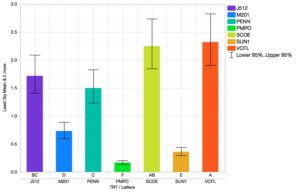 |
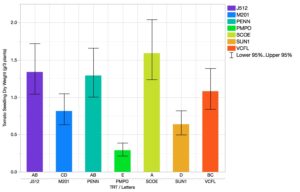 |
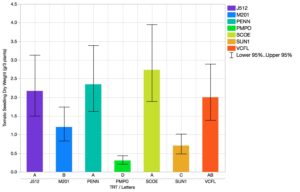 |
|
2 |
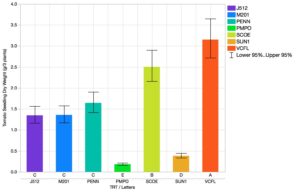 |
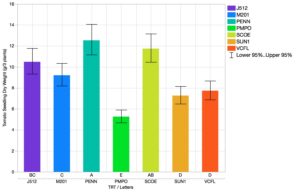 |
 Legend |
Fig. 7. Dry weight of tomato seedlings grown in seven growing media at three Indiana locations, 2018
This project is continuing in 2019. We will compare seedling growth and transplant establishment for plants grown in media with and without additional fertilizer supplied during transplant production. As in 2018, crops will include tomato at all locations, and cucumber, summer squash, and watermelon, spinach, and lettuce at one location each.
For now, we recommend choosing an organic growing medium that contains compost if no additional fertilizer will be applied during transplant production. If using an organic growing medium without compost, we suggest adding needed mineral nutrients (N-P-K) to the medium from an approved source. That source could be a solid fertilizer mixed into the medium at an appropriate rate, or a liquid fertilizer applied regularly during transplant production. Nutrient deficiencies can develop very quickly, so we suggest applying fertilizers to media without compost as soon as plants emerge.
Collaborators on this project include Wenjing Guan, Lori Hoagland, Petrus Langenhoven and Liz Maynard.
Acknowledgment: This material is based upon work supported by the United States Department of Agriculture and the Indiana State Department of Agriculture under Award Number 16 SCBGPIN-0052.
Disclaimer: This report was prepared as an account of work sponsored by an agency of the United States Government and the State of Indiana. Neither the United States Government nor State of Indiana, nor any agency thereof, nor any of their employees, makes any warranty,express or implied, or assumes any legal liability or responsibility for the accuracy, completeness,or usefulness of any information, apparatus, product, or process disclosed, or represents that its use would not infringe privately owned rights. Reference herein to any specific commercial product, process, or service by trade name, trademark, manufacturer, or otherwise does not necessarily constitute or imply its endorsement, recommendation, or favoring by the United States Government, the State of Indiana, or any agency thereof. The views and opinions of authors expressed herein do not necessarily state or reflect those of the United States Government, the State of Indiana or any agency thereof.